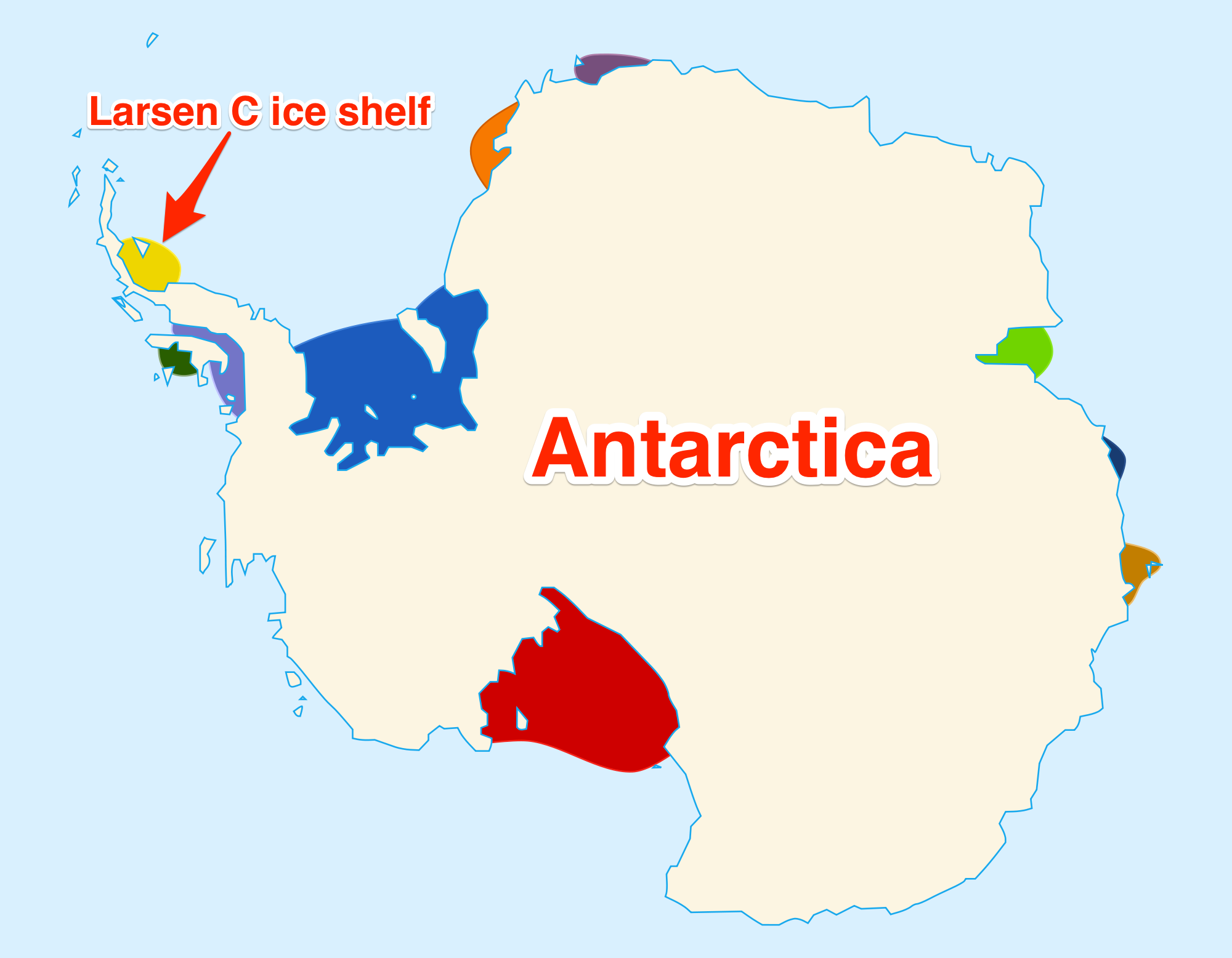A big chunk of ice broke off from Antarctica today and we’re running out of ways to tell you how big it is.
Everything is relative in the world including the size of icebergs.
In 2012, when a piece broke off from Greenland’s Petermann Glacier, the world seemed to have a standard of measurement: Manhattan. Sounded big, as I wrote at the time, except that Manhattan is actually pretty small.
The world’s news organizations are trying to impress you with size in the belief that unless you can get your head around how big the thing is, you won’t be able to comprehend the science of it all.
And that, of course, is the question of whether this is an environmental disaster of some sort, indicative of the planet’s unstoppable journey to becoming a flaming hell.
Probably not.
“Large calving events such as this are normal processes of a healthy ice sheet, ones that have occurred for decades, centuries, millennia — on cycles that are much longer than a human or satellite lifetime,” Helen Amanda Fricker, a glaciologist who studies Antarctic ice for the Scripps Institution of Oceanography, wrote in The Guardian. “What looks like an enormous loss is just ordinary housekeeping for this part of Antarctica.”
There goes a news story floating away, leaving us only with “it’s really big.”
How big?
About the size of Delaware, Business Insider says. Honk if you’ve spent any time in Delaware or have ever thought “Delaware” when the word ginormous comes up.
Business Insider isn’t alone in its Delaware obsession. So is NBC, the Verge, the Washington Post.
It must be a proud day for the people of Delaware, which we could confirm if anybody actually knew people who lived there other than Joe Biden.
The BBC doesn’t know much about Delaware, but says the new iceberg is about the size of Luxembourg, which pretty much serves to tell us that Delaware is the size of Luxembourg.
The Independent used the UK as its reference, appropriately, noting that the beast is only a quarter the size of Wales.
You know how big Wales is (hint: Four times the size of Luxembourg)? No? The iceberg is a quarter size of that.
The Associated Press has tried a different route to relatability. It says the iceberg has twice the volume of Lake Erie, which is a lot except that we don’t know if that is in its melted or frozen state.
Curiously, it’s difficult to find a comparison between the size of the iceberg, and the continent from which it just departed.
For that, we have a map.
See?

It’s a fairly small piece, which, for the record, is about the size of a very small state.
In the Guardian article, Fricker noted that the pace of the natural housekeeping is increasing and says we shouldn’t be complacent about climate change.
But, at least in this country, if our wildfires, severe storms, droughts and floods aren’t enough to impress us, it’s unlikely a chunk of ice at the bottom of the globe will.
Nothing against you, though, Luxembourg.
